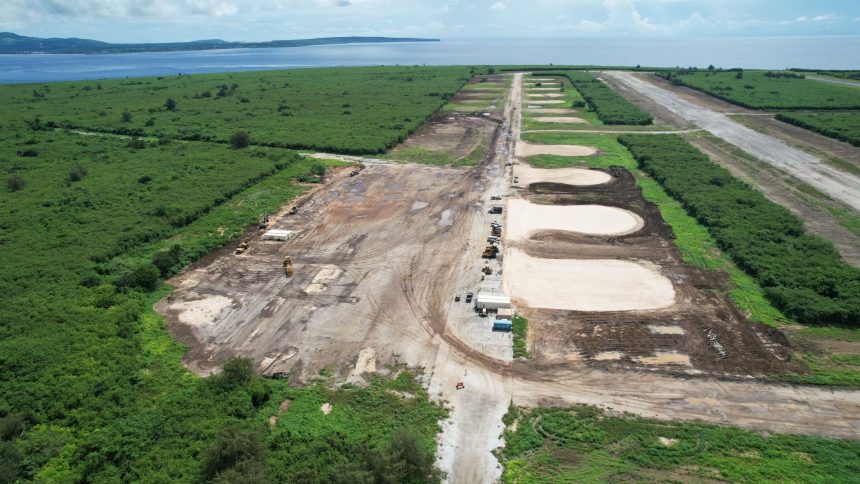The significant airfield repair and upgrade work might support frontline fighters in the future, as the U.S. develops distributed basing to counter China in the western Pacific.
As a part of its plan to revive old World War Two-era airfields in the western Pacific to counter China, PACAF (Pacific Air Forces) released on Oct. 1, 2025 images of works “rehabilitating” the runway at Tinian airfield, in the Northern Mariana Islands. The works involve “repairing roads and preparing facilities to ensure PACAF is ready to respond anytime, anywhere in the Indo-Pacific,” the command said.
Images were also released on the DVIDS network on Sep. 29 showing “equipment maintenance during a site turnover” by the Naval Mobile Construction Battalion (NMCB) 133 and Marines assigned to the 7th Engineer Support Battalion. The activity, according to the captions, took place on Sep. 23.
Another set of images from Feb. 23, 2025, uploaded on DVIDS showed massive restoration work on Tinian’s North Field “to restore the airfield as an alternate location for flight operations at nearby Andersen AFB, Guam, should the primary airfield become unsustainable in a time of war.” This activity was a trilateral effort of the U.S. Navy Seabees, U.S. Air Force Engineers and U.S. Marine engineer teams, using heavy machinery to clear earth, pave asphalt onto a flightline apron and clear 99% of the vegetation from the runways, taxiways and ramps.
Tinian
Tinian is a small island in the Northern Mariana Islands chain, lying 187 km north of Guam, the biggest U.S. base in the region. The base often hosts Bomber Task Forces (BTF) which periodically deploy to the area, as well as fighter deployments.
The island is located about 8 km to the southwest of its sister island, Saipan, and has a land area of 39 square miles. (101.01 km²). Guam itself is currently being upgunned with BMD (Ballistic Missile Defense) interceptors, which will allow it to defend against Chinese ballistic missiles.
Advancing Theater Posture ⏩
Airmen from the 513th Expeditionary RED HORSE have been hard at work on Tinian, rehabilitating runways, repairing roads and preparing facilities to ensure PACAF is ready to respond anytime, anywhere in the Indo-Pacific. pic.twitter.com/uYkXPIl9mc
— PACAF (@PACAF) September 30, 2025
Tinian’s strategic importance was seen during World War II, with the base being the hub for B-29 Superfortress bombers of the 509th Composite Group which flew from the North Field in the campaigns against Imperial Japan. The bombers which carried the Little Boy and Fat Man atomic bombs that were dropped on Hiroshima and Nagasaki also departed from there.
Several other smaller airfields were scattered across the western Pacific at the time.
WW2-era airstrips being revived
From the images on both DVIDS and the PACAF post, it does appear the pictures are of the same location on the island. This however cannot be said for certain, as Tinian has also another airfield- the West Field. Both the PACAF and the Sep. 23 image on DVIDS do not specify the location.
The rehabilitation work at Tinian airfield comes 13 years after four Marine F/A-18D Hornets from the Marine Fighter Attack Squadron 121, within the Marine Aircraft Group 12 (MAG-12), landed on the island’s West Field on May 23, 2012. This was during Exercise Geiger Fury 2012, when the Hornets were the first jets to land there, using an M-31 arresting gear set-up assembled for operations on coral terrain.
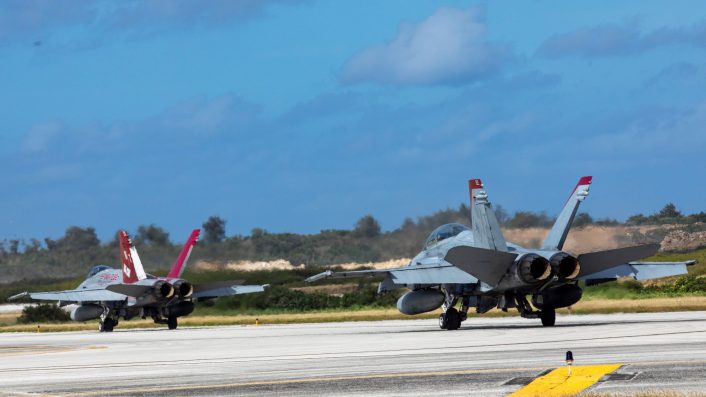
The 2024 edition of the Cope North exercise, held in February 2024, also saw USMC Hornets operating from Tinian. However, this time they flew from the Tinian International Airport.
Another one of these wartime strips was the historic Peleliu airstrip in the Republic of Palau, in the middle of the Pacific, that the Marines recertified in June 2024. The Marine Corps Engineer Detachment Palau (MCED-P) 24.1, comprising engineers from the 7th Engineer Support Battalion, 1st Marine Logistics Group, carried out the task.
Its reopening was marked on Jun. 22, 2024, when a KC-130J Super Hercules from the 1st Marine Air Wing landed after Marines spent months rehabilitating the location. The runway was named in honor of Eugene Sledge, a private first class with the 1st Marine Division who served during the Battle of Peleliu.
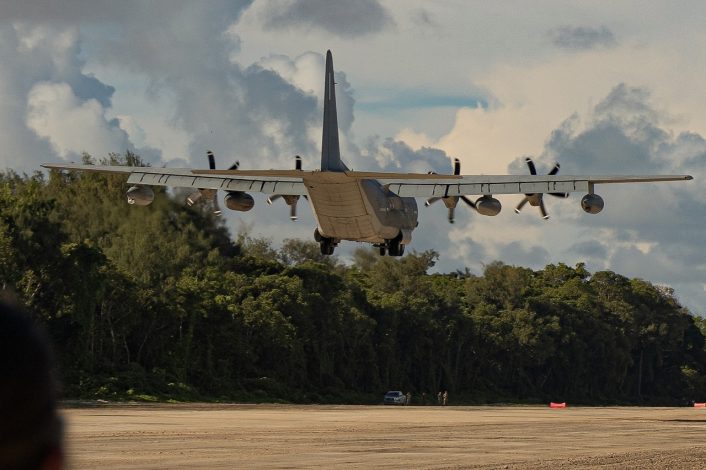
Work at Tinian and significance
While the airfield appears to be largely intact, grass overgrowth and sediment accumulation have made the surface uneven, especially for fighter aircraft which don’t have landing gears designed for rough terrain. Larger transport aircraft like the C-130J Super Hercules can still operate since they are engineered to operate from unpaved runways.
For fighters, as we discussed in The Aviationist about the Marine F/A-18D Hornets landing at Tinian on May 22, 2012, the landing run was assisted by an M-31 arresting gear assembled for operations on the coastal terrain. While this was an ad-hoc arrangement to make the airfield suitable for high-speed jets, the current work eliminates its use. This would also reduce the wear and tear of the arresting system owing to heavy use, but Marines would still have that fallback ready if the need arises.
Given that the work is seen covering the taxiways, apron, and parking bays, it is possible that a second phase would also include the main airfield. In fact, priority might have been granted to the other facilities to allow initial assets to operate there, before working on a paved runway to allow both fighter and cargo operations.
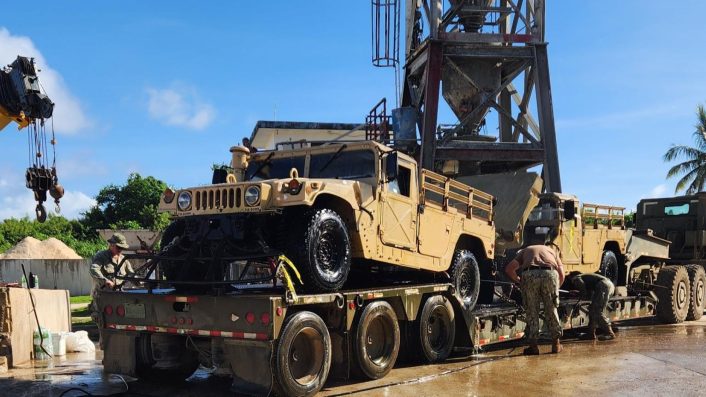
Future
It is also possible the airfield might host CCAs, given how the Air Force and industry have discussed in think tanks about recoverable UAVs (for air-to-air, reconnaissance and EW roles) operating from distributed, unfamiliar forward locations.
Company executives have also suggested directly beginning to field CCAs and figure out the concepts, tactics and future Increments with technical evolutions as they go along, in order to reduce operationalization timelines.
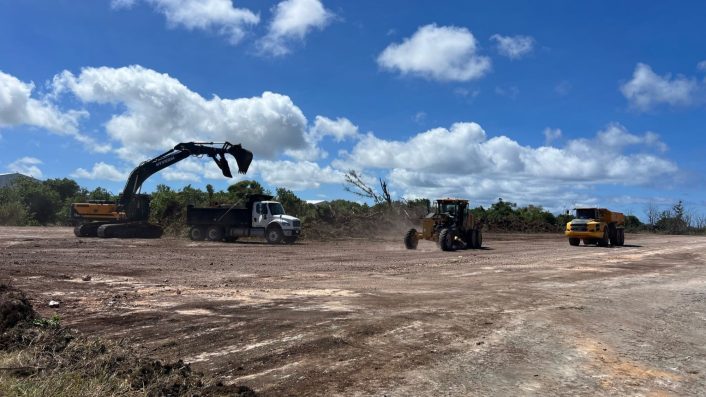
Meanwhile, such infrastructure could be used to launch periodic surges while dictating the tempo of operations, with a view to lead PLA commanders to take decisions more suitable for the U.S. allies. The development of the Tinian airfield is a physical infrastructure manifestation of this broad theoretical concept dictating the use of CCAs and ACE (Agile Combat Operations).
Its actual success remains to be seen and depends on a lot of factors, going beyond industrial capacity issues. It nevertheless does not diminish the significance of diverse physical infrastructure and bases in a conventional war with a peer adversary.
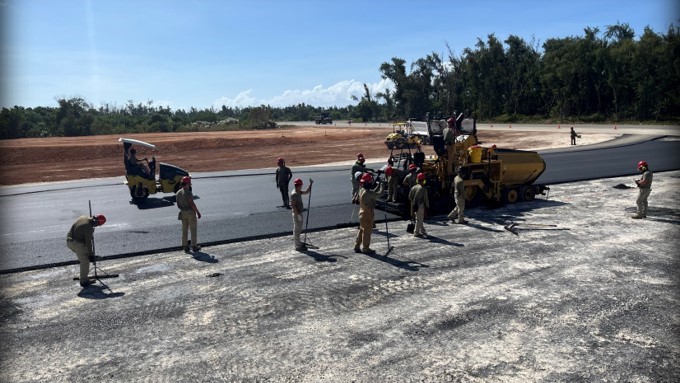
In the coming months we might see larger fighters – like Super Hornets, the F-35 series, F-15s and F-16s – familiarizing themselves with Tinian.

